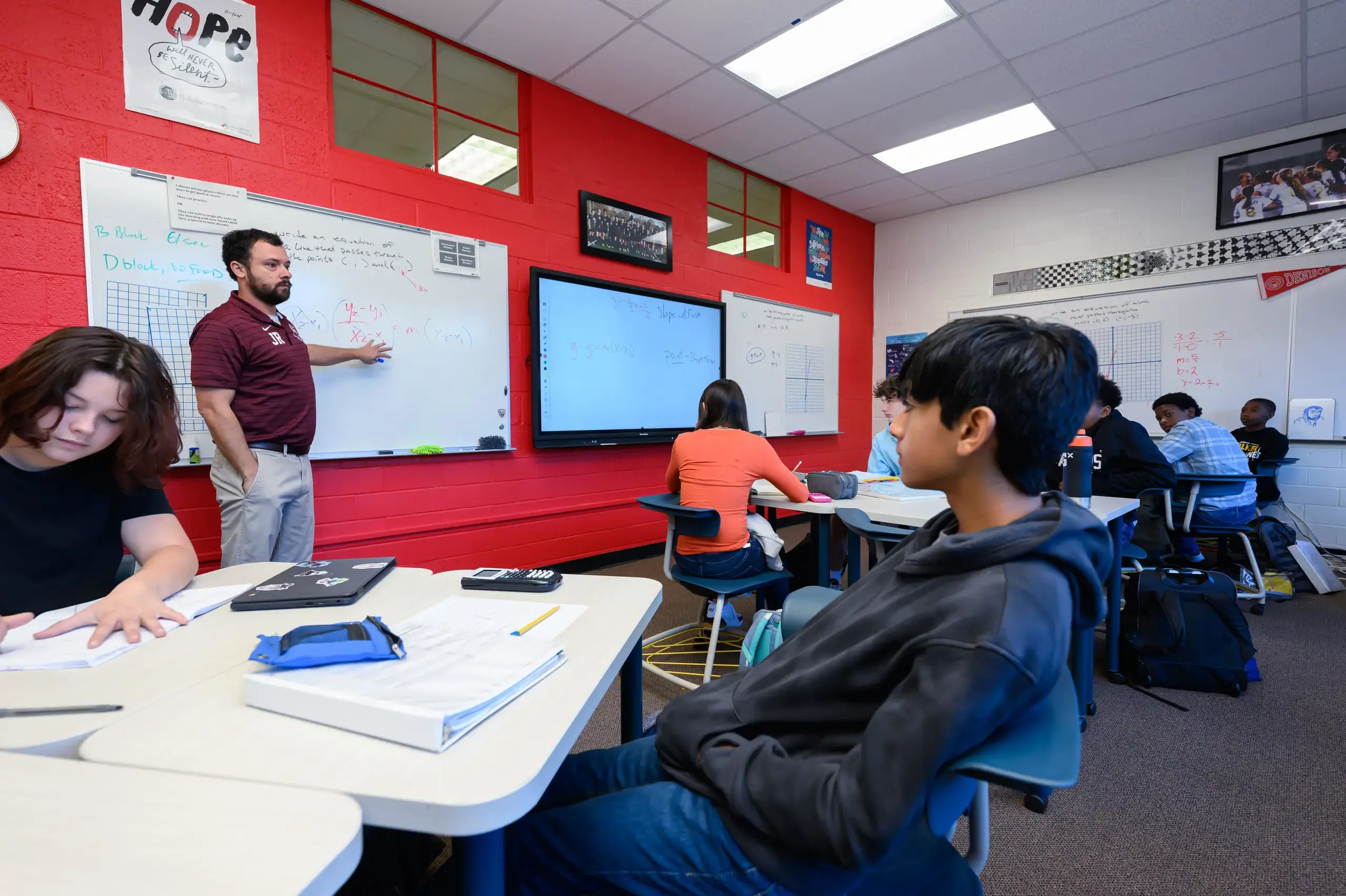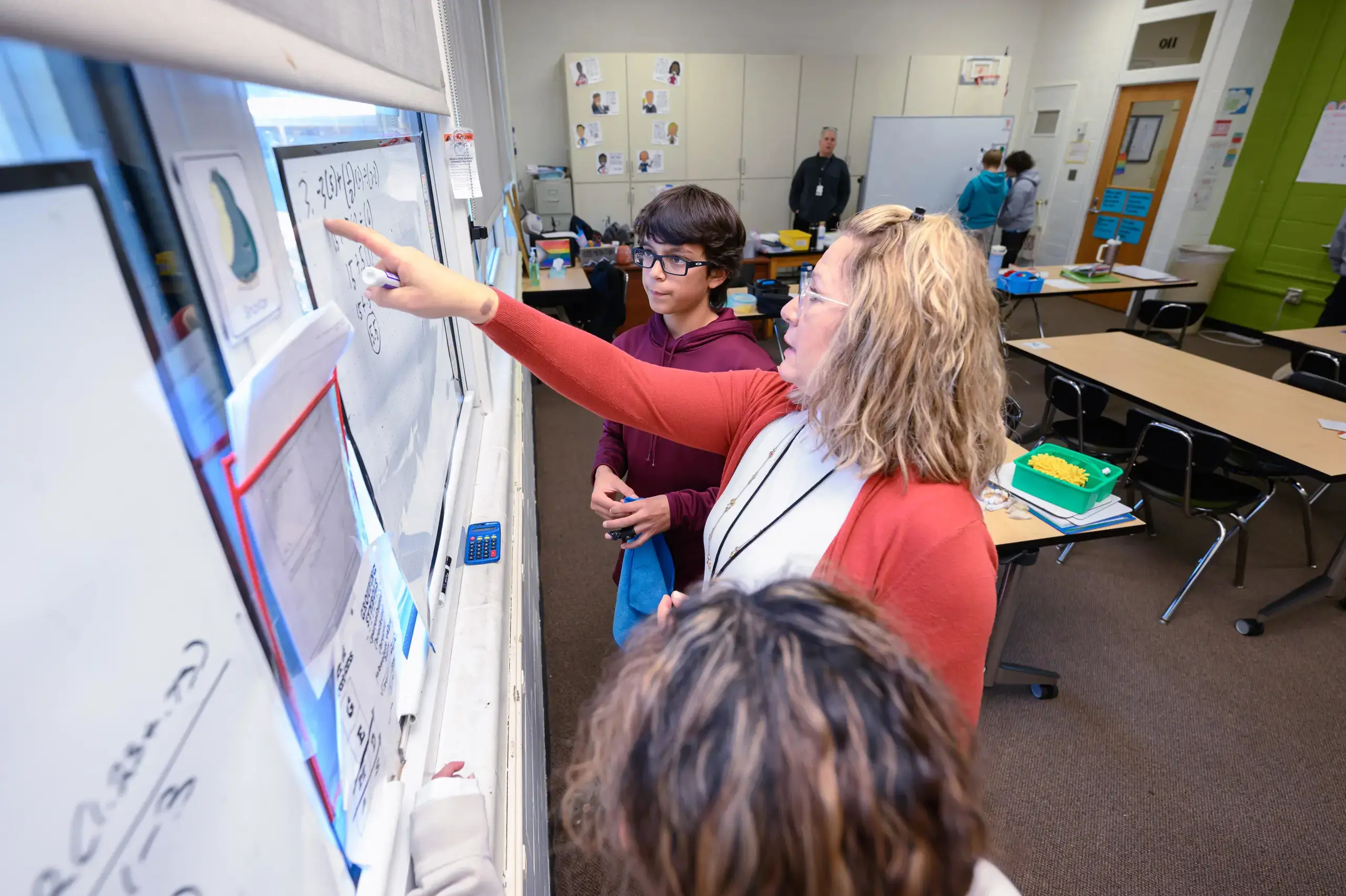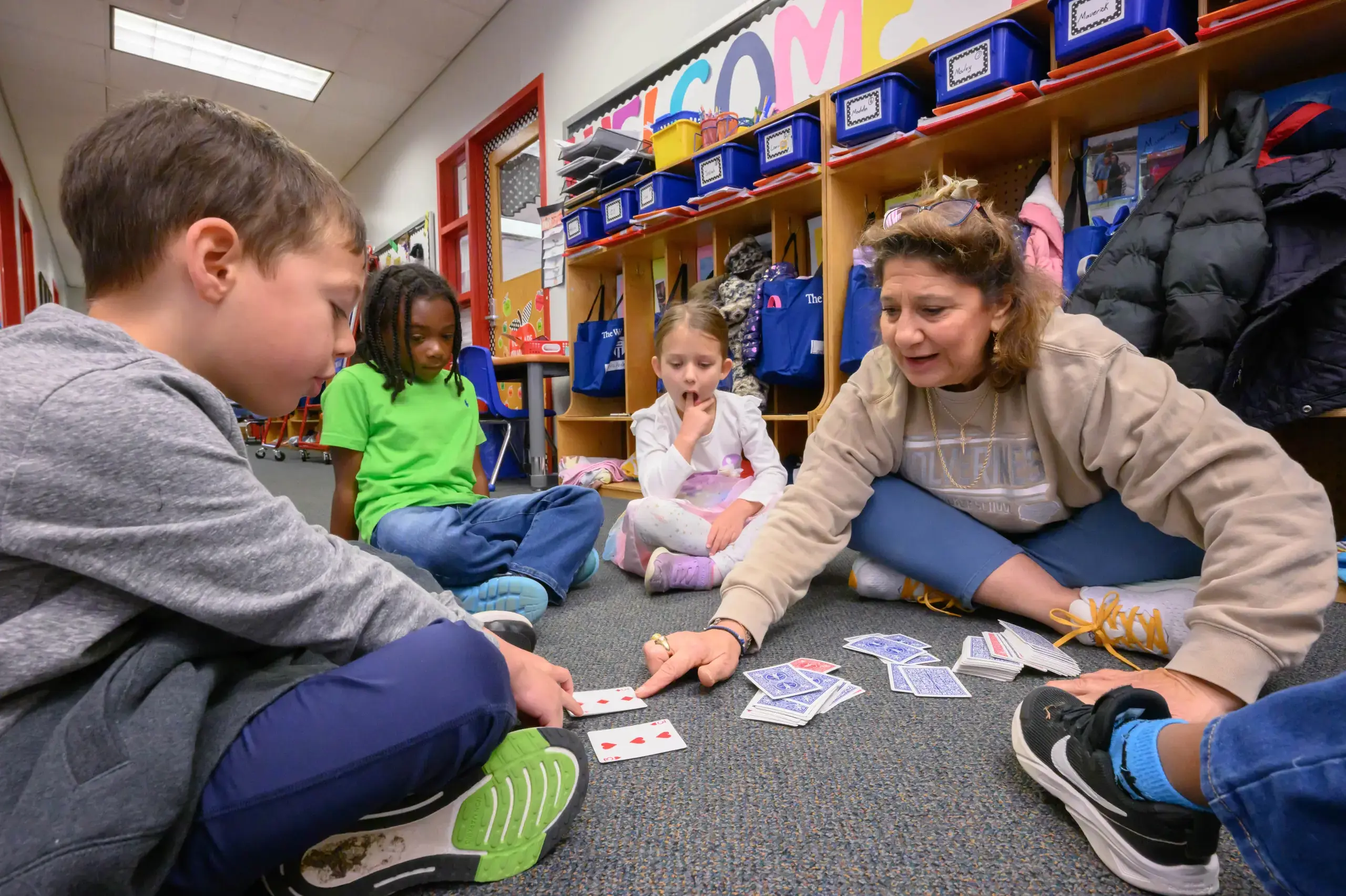At Walker, we teach math with a holistic approach that prioritizes conceptual understanding leading to procedural fluency. We foster resilience and enthusiasm by encouraging students to embrace challenges and view mistakes as essential steps in the learning process. Our emphasis on strong problem-solving skills is complemented by a collaborative environment where students work together to explore solutions. We believe in inclusivity, ensuring all students feel supported and capable. Productive struggle is encouraged, with scaffolding and support provided to help students navigate difficulties. This method not only cultivates mathematical proficiency but also instills a love for learning and perseverance.
PRIMARY SCHOOL
A multi-sensory instructional approach using hands-on activities
and games is used to help students develop a strong number sense while providing a solid foundation in mathematics. Students of all ages practice number and shape recognition, sorting, patterning, and basic computation.
Early Learners strengthen their one-to-one correspondence, grouping, counting, and sorting skills to prepare for extended application of these skills and more in Pre-kindergarten. By the end of kindergarten, students expand their number sense to compose and decompose numbers within 20. Students further explore geometry, measurement and data, and operations and algebraic thinking and apply taught concepts to solve story problems.

LOWER SCHOOL
Problem-solving is at the center of math learning, and in the Lower School, the concepts are taught with a concrete–pictorial–abstract learning progression through real-world, hands-on experiences. Students first investigate mathematical concepts through the use of hands-on manipulatives. They then move on to the pictorial stage in which pictures are used to model problems. Later, when students are more familiar with the ideas taught, they progress to the abstract stage in which only numbers, notations and symbols are used. Instruction focuses on mathematical thinking and the application of skills to problem-solving. Students learn to understand the “how” and the “why” so they can tackle both routine and non- routine problems.
In the Lower School, math lessons are taught in both whole-group and small-group settings. Teachers use this flexibility to best meet the needs of all their mathematical learners. In fourth and fifth grades, the teaching of math is departmentalized, and a math specialist teaches all students in our upper elementary. Through ongoing assessment, teachers can differentiate math instruction, adding additional support where required and providing challenges to stretch thinking where needed. Above all, it is important that all Lower School students not only see the importance of mathematics but also see themselves as capable, confident mathematicians.

MIDDLE SCHOOL
In Middle School, math is taken in chronological order and based on teacher recommendations and placement tests. Math courses in Middle School include Math Foundations, Pre-Algebra, Intro to Algebra, Algebra I, Geometry and Algebra II. Algebra I, Geometry, Algebra II (and first-year world languages) are Upper School courses requiring final exams. Students may earn Upper School credit for these courses.

UPPER SCHOOL
Upper School students practice and develop logical thinking and problem-solving skills. We strive to meet each student where they are in their level of understanding, helping them to build skill and confidence in the subject matter by reading about, writing about and talking about mathematics.
We encourage our students to take full advantage of the wide range of courses available to them – which reach as far as AP Calculus, AP Statistics, Multivariable Calculus, Linear Algebra and beyond – crafting a path of study that will challenge them as well as help them reach their individual goals.


_836.webp?version=638594390375230000)

